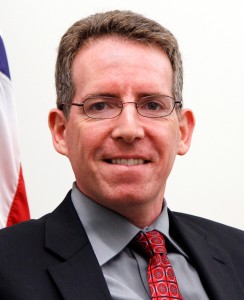By: Jonca Bull, M.D.
As a medical doctor and director of FDA’s Office of Minority Health, I am highly conscious of health disparities in the United States. Certain racial and ethnic populations respond differently to some medical products. FDA ensures that these differences are considered in its review of marketing applications for medical products.
But as an American, I am also highly aware how much all of us in this country have in common, a simple truth that emerges with particular clarity during this African American History Month, when we commemorate the 150th anniversary of President Lincoln’s Emancipation Proclamation and the 50th anniversary of the March on Washington.
 Both events have had a profound effect not only on African Americans, but on our entire nation. The Emancipation Proclamation was critical to President Lincoln’s efforts to end the Civil War and advance freedom. The March on Washington brought us Dr. Martin Luther King’s unforgettable call to America to live up to his “dream.” His vision of equality and racial harmony has been a steadfast guide for all Americans as we strive toward “e pluribus unum”— “Out of Many, One”, the ideal enshrined in the Seal of the United States.
Both events have had a profound effect not only on African Americans, but on our entire nation. The Emancipation Proclamation was critical to President Lincoln’s efforts to end the Civil War and advance freedom. The March on Washington brought us Dr. Martin Luther King’s unforgettable call to America to live up to his “dream.” His vision of equality and racial harmony has been a steadfast guide for all Americans as we strive toward “e pluribus unum”— “Out of Many, One”, the ideal enshrined in the Seal of the United States.
This common bond unites us in many other ways.
As an ophthalmologist and a physician, I have a great admiration for the many distinguished African Americans who advanced medical science.
For example, Dr. Charles Drew discovered a method for the preservation of blood that was used extensively during World War II by the British military to save the lives of wounded soldiers. After the war, Drew was appointed the first director of the American Red Cross Blood Bank.
He was only one of many outstanding African-American scientists.
This honor roll includes Percy Julian, an Alabama native who earned a Ph.D. from the University of Vienna, and in 1935 synthesized physostigmine, a drug for the treatment of glaucoma, and cortisone for the treatment of rheumatoid arthritis.
It includes Daniel Hale Williams, the first surgeon to successfully perform open-heart surgery, Dewey Sanderson, the inventor of the urinalysis machine, Otis Boykin, who designed a control unit for the heart pacemaker, and Michael Croslin, who computerized blood pressure devices.
As a civil servant, I celebrate the history of African Americans by remembering their leadership in public health. The first to earn this distinction was Patricia Harris, a Howard University professor, who in 1979 became the Secretary of Health, Education and Welfare. Ten years later, the department was entrusted to the leadership of Dr. Louis Sullivan, the founder of the Morehouse School of Medicine. And in 1993, Dr. Joycelyn Elders, a pediatrician and public health administrator, became the first African-American to be named Surgeon General.
And as an FDA employee, I am proud to be working with many outstanding administrators and scientists of African-American ancestry who every day contribute to the public health and help advance FDA’s mission.
I have mentioned just a few of the distinguished narratives in our history that have been authored by remarkable African Americans—intellectuals, professionals, soldiers and artists of outstanding achievement.
I celebrate these women and men as fellow Americans whose extraordinary spirit, talent and efforts advance better health for all. I celebrate them as an inseparable part of my own proud heritage as an African American citizen.
Jonca Bull, M.D., is Director of FDA’s Office of Minority Health





